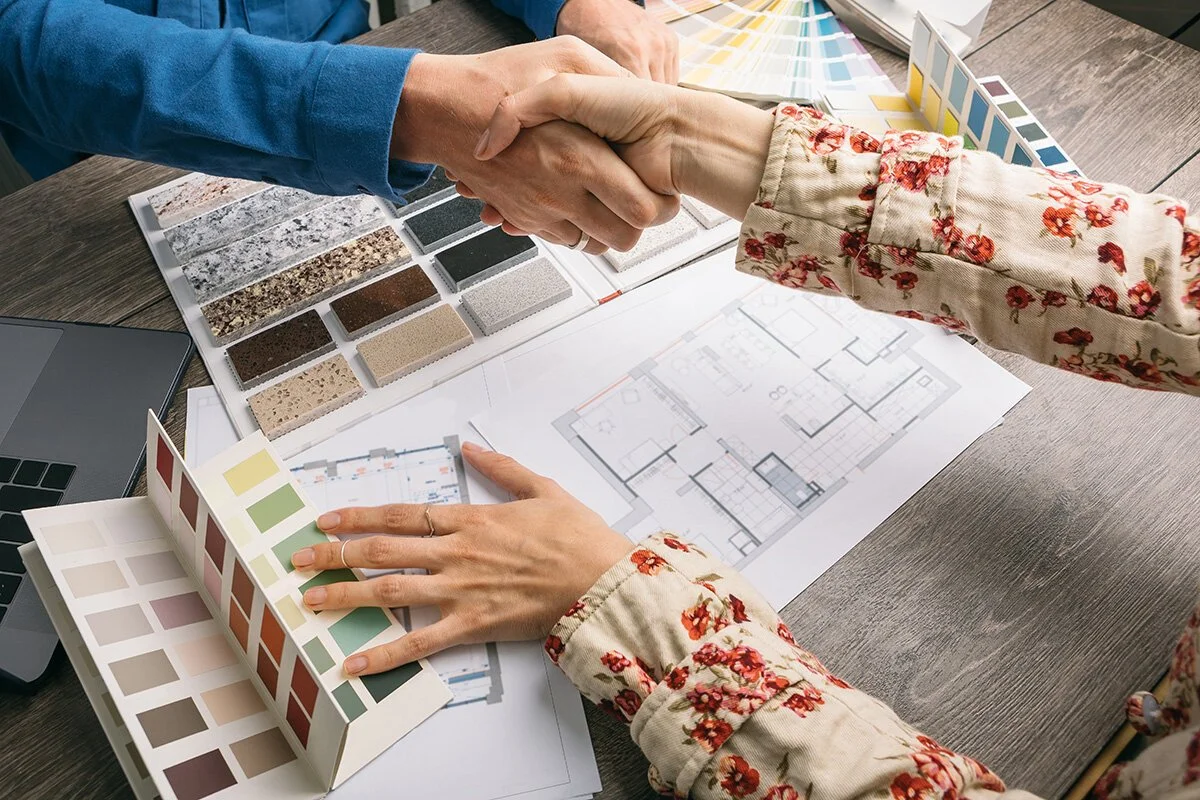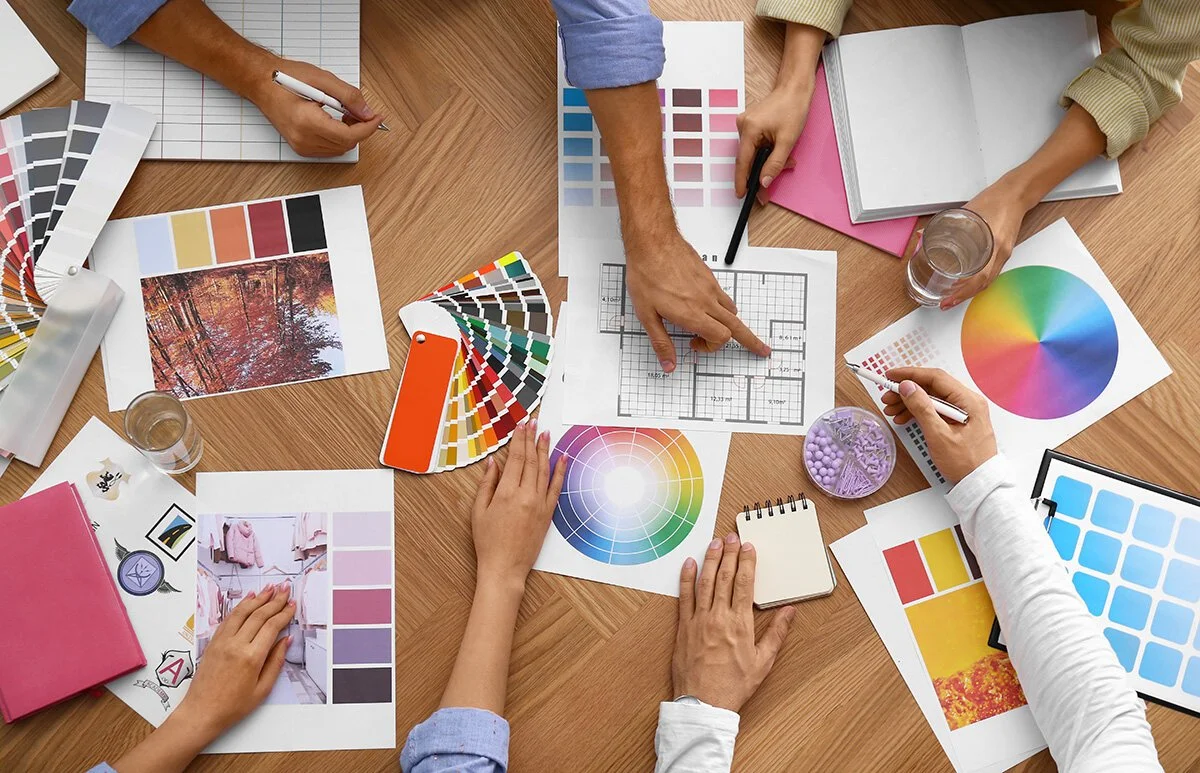How to have the Project of Your Dreams? Be a Dream Client!
You work harder for people you like and care about, right? As designers, it’s our job to act with professional diligence for all our clients. But let’s be honest. That nightmare client is not going to inspire anyone to go the extra mile in the same way the dream client is. Trust me, you want your designer to smile when they see an email from you, not sigh. You catch more flies with honey than vinegar!
Here’s how to make sure your designer loves you:
Be honest about your budget
Designers are not out to grab your money! We can help you save heaps of cash, slashing prices without compromising style or quality. But we do need to know what you want to spend. Telling us you want to spend less than you truthfully plan to won’t make us work extra hard to save money, it will mean we don’t show you ideas that you might love because we (wrongly) think they’re too expensive for you. Likewise, slightly inflating your budget will only lead to stress and heartache as you inevitably panic to recoup costs partway through. If you’re not sure about your budget, that’s okay. We will talk through what prices might look like for the project you have in mind and tell you where you can save and where you should splurge!
Don’t constantly ask for discounts
My clients aren't just paying for my time. They’re paying for my qualifications, my years of experience and my industry connections. And as much as I always want us to have open conversations about prices (my philosophy is great design is for everyone, not just the elite few) clients trying to haggle on my fees does not sit well. It's telling me you don’t think my time is worth what I tell you it’s worth. I’ve set my prices based on my skill level and experience. Trust me, I’ll save you money throughout your project!
Be realistic
You’re probably not going to get an island, a range cooker and an American style refrigerator in the kitchen of your one-bedroom apartment.
A great designer can do incredible things, but you should always keep these three things in mind:
-The results you want.
-The amount you want to spend.
-The time you want it to take.
Because you probably can’t have all three! What compromises can you live with?
Listen to advice
I don’t give advice lightly! If I tell you something is a bad idea, that’s because I’ve already made that mistake, or I know someone who has. You don’t have to love all my ideas, some of them can be a bit 'outside of the box', but I’m sure you didn’t hire a professional just so you could ignore everything they had to say and do it your way, right? Ultimately, if you don't want to take a designer’s advice, it might be frustrating for me, but it’s your project that’s going to suffer-and nobody wants that!
Communicate clearly
It’s okay to not know exactly what you want; afterall, that’s why you contacted me in the first place. But, if you do have an idea of what you want, whether that’s just an idea or a fully formed picture, you have to tell me! A mind reader I am not.
Visualising things can be hard for a lot of people, which is why I always make a design board to communicate the aesthetic first. I find Pinterest boards and dropboxing images to be a great way for clients to communicate ideas. If you want to start collecting inspiration, here’s a non-exhaustive list of things you could include:
Pictures of rooms similar in size and style to yours
Pictures of rooms not at all like yours, but what you want your space to become
Works of art
Favorite items of clothing or jewellery
Colors and textures
Individual items of furniture
Desk, dressing table or dining place set-ups
Anything that conveys the feeling you want in your home
Know when to be hands-off
I know what I’m doing-if I didn’t then I wouldn’t have built up a successful design business! Micromanaging and sending hundreds of emails is honestly just a waste of my time and your time. If I’m busy all day replying to your emails then I’m not spending time designing your project. And if you’re micromanaging, with exact ideas about how you want every single detail to be handled, then perhaps you would be better off doing the project yourself… An overload of communication, checking in and following up is likely going to lead to a jaded designer who won’t bother making suggestions or acting under their own initiative, which is essentially what you’re hiring them to do!
Have a single point-of-contact
My team is pretty small and close-knit, which I love. It’s not the case for all agencies though, and even with me, you’ll likely deal with multiple people. You’ll have project managers and tradespeople, you might even deal with one of my assistants. I can’t stress enough, even with small teams, the importance of having one point of contact. If you’re ever in any doubt, ask your designer ‘whom do I contact?” - then copy that person into everything, unless they tell you they don’t need to be part of this conversation. In the past, I’ve known of clients having a theoretical chit-chat about changing the color-scheme with a receptionist, who thought it was a decision made and passed on the message to go ahead and make the change. Messages can get easily misconstrued and lost; it’s so important to know whom your contact is and to run everything through them.
Don’t go behind our backs
Going behind the backs of your designer to try and save money or steal ideas is the biggest trust-breaker ever. Depending on what you do, you can expect the designer to fire you as a client then and there. Don't think you can pop down the street to the next agency either, designers talk and you might find yourself blacklisted!
Querying prices is fine. Asking to see more options is fine. Speaking to multiple agencies before committing to see whom you vibe with, that’s all great! Taking the room plan I’ve spent hours working on and giving it to a cheaper and less experienced designer to copy, that’s only one step above theft. Phoning up our suppliers to check if you can cut a cheaper deal and playing suppliers off against each other will always backfire.
Respect working hours
Lots of us designers are self-employed, meaning the temptation to stay an extra hour at the office or to pick up a call on a Saturday is very much there! So, every once in a while, you might expect to have an email pop through outside of office hours, and if you send emails outside of office hours, we don't mind. But on the whole, it’s important to remember you can only expect a response between whatever office hours your designer lays down. Not sure what hours they keep? Ask them! There is nothing nicer than a client asking ‘Are there any days of the week or times that you prefer to deal with emails and calls?’
And Last but not least…Tell your friends!
Small interior design businesses don’t usually have great big marketing budgets. The vast majority of my work comes through word-of-mouth. So if you’ve worked with a designer and you love the results, tell everyone! Tell you friends in person, ask your designer where you can leave a review, engage on their social media posts, tag them in things. Being vocal about your positive experience is the single most meaningful and highly appreciated thing you can do.





